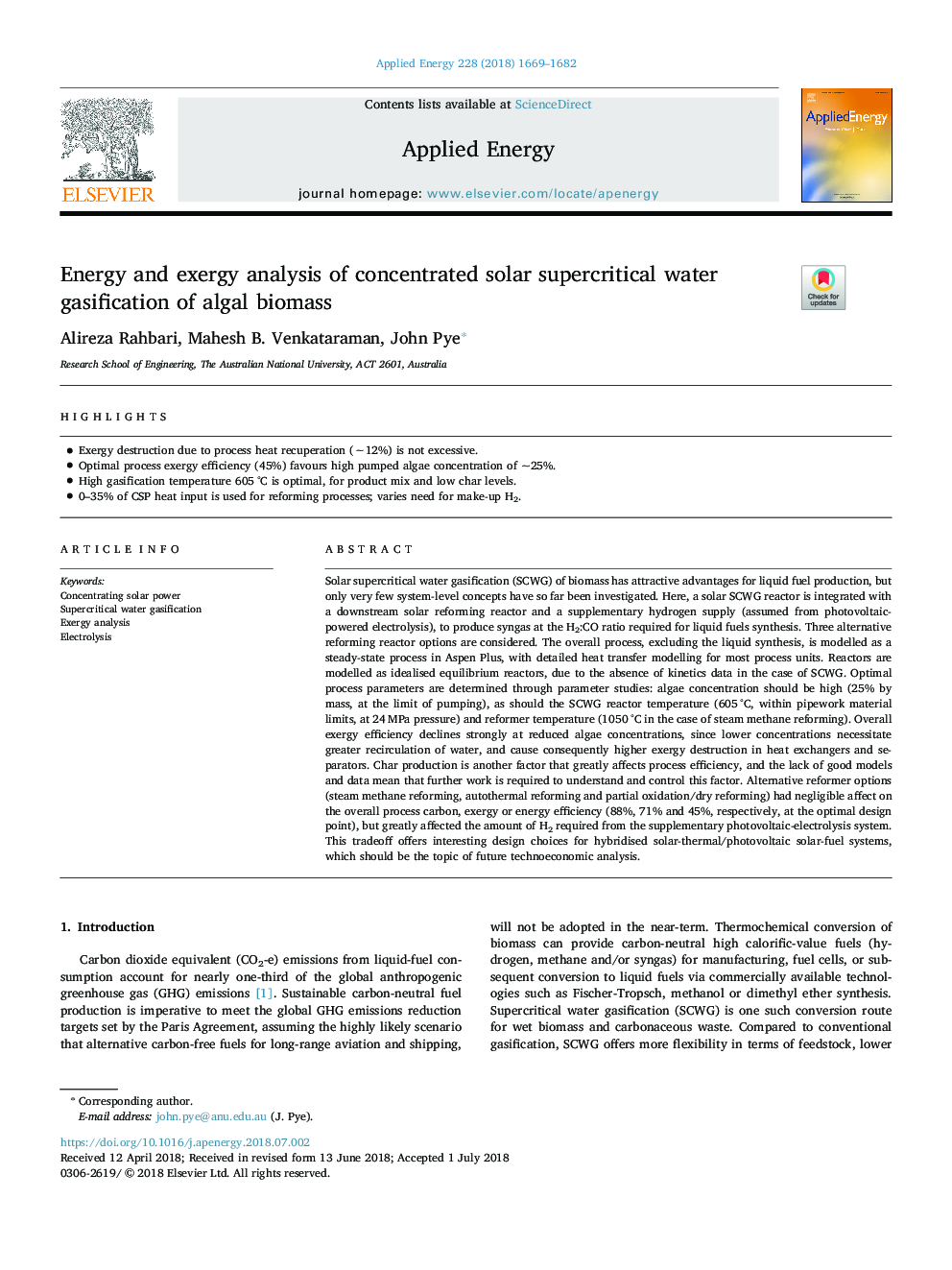| کد مقاله | کد نشریه | سال انتشار | مقاله انگلیسی | نسخه تمام متن |
|---|---|---|---|---|
| 6679872 | 1428063 | 2018 | 14 صفحه PDF | دانلود رایگان |
عنوان انگلیسی مقاله ISI
Energy and exergy analysis of concentrated solar supercritical water gasification of algal biomass
ترجمه فارسی عنوان
تجزیه و تحلیل انرژی و اکسرژی غربالگری انرژی فوق بحرانی آب گرم از زیست توده جلبک دریایی
دانلود مقاله + سفارش ترجمه
دانلود مقاله ISI انگلیسی
رایگان برای ایرانیان
کلمات کلیدی
غلظت انرژی خورشیدی، گازسیون فوق بحرانی، تجزیه و تحلیل اگزرژی، الکترولیز،
موضوعات مرتبط
مهندسی و علوم پایه
مهندسی انرژی
مهندسی انرژی و فناوری های برق
چکیده انگلیسی
Solar supercritical water gasification (SCWG) of biomass has attractive advantages for liquid fuel production, but only very few system-level concepts have so far been investigated. Here, a solar SCWG reactor is integrated with a downstream solar reforming reactor and a supplementary hydrogen supply (assumed from photovoltaic-powered electrolysis), to produce syngas at the H2:CO ratio required for liquid fuels synthesis. Three alternative reforming reactor options are considered. The overall process, excluding the liquid synthesis, is modelled as a steady-state process in Aspen Plus, with detailed heat transfer modelling for most process units. Reactors are modelled as idealised equilibrium reactors, due to the absence of kinetics data in the case of SCWG. Optimal process parameters are determined through parameter studies: algae concentration should be high (25% by mass, at the limit of pumping), as should the SCWG reactor temperature (605â¯Â°C, within pipework material limits, at 24â¯MPa pressure) and reformer temperature (1050â¯Â°C in the case of steam methane reforming). Overall exergy efficiency declines strongly at reduced algae concentrations, since lower concentrations necessitate greater recirculation of water, and cause consequently higher exergy destruction in heat exchangers and separators. Char production is another factor that greatly affects process efficiency, and the lack of good models and data mean that further work is required to understand and control this factor. Alternative reformer options (steam methane reforming, autothermal reforming and partial oxidation/dry reforming) had negligible affect on the overall process carbon, exergy or energy efficiency (88%, 71% and 45%, respectively, at the optimal design point), but greatly affected the amount of H2 required from the supplementary photovoltaic-electrolysis system. This tradeoff offers interesting design choices for hybridised solar-thermal/photovoltaic solar-fuel systems, which should be the topic of future technoeconomic analysis.
ناشر
Database: Elsevier - ScienceDirect (ساینس دایرکت)
Journal: Applied Energy - Volume 228, 15 October 2018, Pages 1669-1682
Journal: Applied Energy - Volume 228, 15 October 2018, Pages 1669-1682
نویسندگان
Alireza Rahbari, Mahesh B. Venkataraman, John Pye,
